2009 New Zealand Championships - Preview: All Grades
13-Apr-200929 bands competing this year with the guarantee of trophies in all grades staying on home soil.
A GRADE
Adjudicator: Professor David King
Test: Paganini Variations (Phillip Wilby)
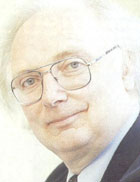 Paganini Variations' is the Alton Towers of test pieces.
Paganini Variations' is the Alton Towers of test pieces.
Thousands have visited it over the years, and every man jack of them has been thrilled by the breathtaking roller coaster rides to be found within its boundaries.
It's a fun house of technical brilliance and musical enjoyment, a masterful exhibition of the compositional craft. It may frighten the life out of every player who first opens their part, but given a strong constitution, nerves of steel and the ability to overcome the intricacies of the Gordian knot of problems it poses, it leaves the conductor and performer with a sense of enjoyable fulfilment that few other test pieces can match.
Just like Alton Towers however, it has become a challenge that has been cheapened by its popularity. Unlike Alton Towers, it has retained its dignity despite its almost constant degrading by ASBO brass bands and their musically inept conductors who have had little respect for it stature. It's brilliance as a test piece has never lost its sheen, despite the best efforts of the cheap thrill seekers who have tortured it to varying degrees of catastrophe.
Everyone enjoys Paganini Variations, but that doesn't mean that it has been in any way mastered by the vast majority of cock eyed attempts to overcome its challenges. 15 years after it was first written, it is time for the piece to once more to be performed at the highest level by the very best bands. It deserves nothing less.
Since it was commissioned in 1991 by the BBC, it has perhaps become the most performed modern test of all time. There cannot be many aspiring bands who have not tried to overcome it and not many bandrooms where it cannot be found in the librarian's cupboard.
Much of it initial popularity stemmed from the fact that it was given a whole hatful of outstanding performances at the 1991 British Open, won in quite breathtaking manner by Grimethorpe Colliery Band conducted by Frank Renton in his pomp. It is questionable whether there has ever been a better performance, although on the day they were pushed all the way, especially by Fairey's who all but had the contest in their pocket before their percussion section started hitting the hell out of the side drums in the final Full Voice section to lose them the contest.
Within a year it was being used all over the world and it has since been played by Championship and Youth Bands, by ensembles from Chicago to Christchurch and at contests as diverse as Pontins to the Norwegian Nationals.
It was last used at the Masters in 1995, when Fodens under Howard Snell gave one of the truly rare world class performances of it since 1991 to win the title. There have been very, very few since.
Perhaps the reason for this lies in the fact that the piece is so accessibly easy to play poorly, yet so impossibly intricate to perform brilliantly. Right from the opening few bars through to the magnificent Land of Hope and Glory build to that final Plena Voce it is as complex a score of cryptic intrigue that few, if any conductors unless of the highest class, fully understand the depth of musical language it contains. The subtleties of the writing ask immense questions of the performers as well as the conductors and only the best of both are able to answer them.
Take for instance the question of tempo.
Each of the 16 variations (although the composer does say only 14 in the notes at the beginning), as the composer states, "aims to exploit the full potential of modern brass band playing." This can only be done with an acute understanding of the tempos of each.
The opening statement is marked crotchet =138, yet only four subsequent Variations have clear markings from the composer. The rest are marked with intention: from Funebre to Bolero but the relationship to what precedes and follows each is left to the conductor to work out and deliver intelligently. This is invariably where many falter: Too many performances lack any subtle kind of tempo variance.
Dr Wilby also makes the point in his notes at the beginning of the score that "The full flavour of Paganini's romantic heritage finds its expression in a mixture of extravagantly virtuosic display, and serene and passionate melody." This is a clue to how to approach the music making as well as the technical pyrotechnics, yet so many MDs totally fail to understand the requirements so clearly set out in black and white.
The dynamics and notation markings to be found in just about every bar of the piece are varied and detailed and require refinement and a real sense of style. Meanwhile, the term extravagant doesn't mean completely OTT, so the technical stuff must have sense of warm virtuosic brilliance rather than cold, dead eyed note crunching. Again, this is where so many fall flat.
The major variations where the flying fingers are set to work can still sound vibrant even at high speed - if they are given shape and style; yet so many will just blast them out Gatling Gun style. The clever use of mutes is another point to note too. How many will get the balance right in the cornets at Variation II for instance?
Finally, passion. This is music to stir the soul, to stand up the hairs on the back on your neck, not on the palm of your hand.
Passion comes in many guises, and all of them require a touch of delicacy and warmth. There is a real difference between dewy eyed �Lassie come Home' tugging at the heartstrings stuff and a real sense of romanticism that is to be found at Variation 14. Tenderness and flexibility is the key a sense of understanding for your musical partner. So many on the day will opt for the 'Wham Bang, Thank You Mam" approach. The cadenzas in particular are marked espressivo not blastissimo.
The section though that will give you all you need to know about the quality of the band that is playing and the musical intelligence of the MD will come at rehearsal marking O in Variation 14. The flugel leads with a sense of absolute tender sweetness, accompanied by treble piano cornet foundation and pizzicato euph. It builds and subsides with such perfect use of balance and colour that only the classiest bands will make it shimmer with a sense of despair (it follows the funebre variation) without wallowing in self pity and crocodile tears. Listen out and really think what you are hearing is moving your soul.
It of course all ends with a big crash, bang, wallop ending, but one that with a hint of genius still asks the bands to search for the detail amid the cacophony. Full Voice doesn't mean shout yourself hoarse, but so many will won't they?
'Paganini Variations' is one of the true great test pieces for brass band. It has survived battered but unbowed and deserves its place on the highest plinth of achievement of brass band compositions. Let's hope the bands at the Championships do it proud.
Iwan Fox
A Grade:
Own Choice Selections:
Albion (Jan van de Roost)
On Alderley Edge (Peter Graham)
Dreams (Bertrand Moren)
Concertino (Kenneth Downie)
Lowry Sketchbook (Philip Wilby)
Harmony Music (Phillip Sparke)
Contest Music (Wilfred Heaton)
Vienna Nights (Philip Wilby)
A number of interesting choices have been made by the top bands. What happens first in Europe seems to quite quickly end up in the furthest corners of the banding world, and this year is no exception, with 'Dreams' by Bertrand Moren, (used at the 2008 European Championships) and 'Concertino for Brass Band' by Kenneth Downie (2008 National Championships of Great Britain) being used this weekend.
All the rest of the choices are well known and modern too, from Jan Van der Roost's 'Albion' to Philip Wilby's 'Vienna Nights'. The oldest work is the classic 'Contest Music' by Wifred Heaton, whilst it is nice to see a return to the contesting stage for 'Harmony Music', 'A Lowry Sketchbook' and 'On Alderley Edge' .
All the pieces are true tests of character and musicianship (as well as nerves) and each will take some playing. Ambition has run free it seems in the pursuit of the New Zealand National this year.
Ascot Park Hotel Brass
Conductor: Dave Gallagher
An improving record for Ascot Park, and they will be looking to push towards the podium places this year after their encouraging 4th place last year in Christchurch.
The experienced Dave Gallagher will be at the helm again and his experience should prove invaluable to what could be another strong assault on the title.
Past NZ Nationals track record:
2008: 4th
2007: 9th
2006: 8th
2005: 7th
 Dalewool Auckland Brass
Dalewool Auckland Brass
Conductor: Howard Taylor
Howard Taylor takes over the reins at the former champions, and they will be keen to add to their impressive record at these championships over the years.
If they click then they could well be looking at returning home with yet another title to their name.
Past NZ Nationals track record:
2008: DNC
2007: 3rd
2006: 2nd
2005: 3rd
2004: Winners
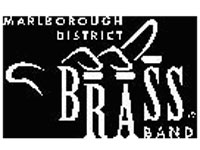 Marlborough District Brass
Marlborough District Brass
Conductor: Kevin Moseley
Another band on the up at these championships, Marlborough will be looking to repeat the kind of form they showed in Christchurch last year when they pushed Brisbane hard for the title.
Kevin Moseley has a confident and maturing band at his disposal and that confidence may not be misplaced this time around.
Past NZ Nationals track record:
2008: 2nd
2007: 7th
2006: 5th
2005: 9th
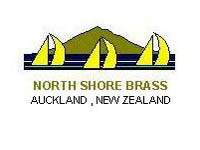 North Shore Brass
North Shore Brass
Conductor: Peter Adams
A band that is making progress in the right direction, North Shore has put in solid performances at these championships over the last three years.
Peter Adams takes over the helm this year and will be keen to keep that upward momemtum continuing. Outsiders maybe, but not a band to discount for sure.
Past NZ Nationals track record:
2008: 7th
2007: 8th
2006: 6th
2005: DNC
 Pelorus Trust Wellington Brass,
Pelorus Trust Wellington Brass,
Conductor: Dave Bremner
The multi talented Dave Bremner has created something of a musical juggernaut with Pelorus and that was certainly confirmed with the combination winning the B Grade in Christchurch last year with something to spare.
How they will cope with the extra demands of the A Grade? Given their recent track record, we think they won't be fazed by the challenge. A drak horse for the podium places even?
Past NZ Nationals track record:
2008: Winners of B Grade
2007: Winners of B Grade
2006: DNC
2005: Winners of B Grade
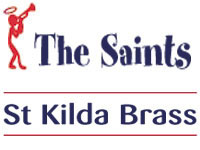 St Kilda Brass,
St Kilda Brass,
Conductor: Steve Miles
Consistency has been the name of the game for St Kilda in the last two years as they continue to show real signs of contesting solidity under the baton of form Brighouse euphoium star Steve Miles.
With plenty of talented players in the ranks they could well be a band to look out for this year.
Past NZ Nationals track record:
2008: 5th
2007: 5th
2006: 9th
2005: 6th
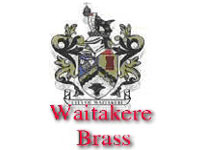 The "Trusts" Waitakere Brass,
The "Trusts" Waitakere Brass,
Conductor: Steven Booth
Steven Booth is continuing to do a fine job in rebuilding Waitakere, and although they could only manage 9th place in Christchurch the signs were there of better days ahead.
Those days may well be on the horizon this weekend if they can just up their form once more, and a top six place may well be within their grasp.
Past NZ Nationals track record:
2008: 9th
2007: 4th
2006: DNC
2005: 8th
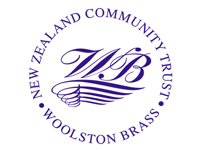 Woolston Brass,
Woolston Brass,
Conductor: Graham Hickman
Woolston will be keen to return to winning ways at the National, especially as it is now three years since they last won .
On their day they will surely be the band to beat, but they have come unstuck before as favourites and can be slow starters at times. If they are sharp out of the blocks on this occassion they could well be celebrating long into the Napier night.
Past NZ Nationals track record:
2008: 3rd
2007: 3rd
2006: Winners
2005: 2nd
B GRADE
Adjudicator: Professor David King
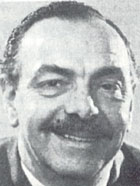 Test: Spectrum (Gilbert Vinter)
Test: Spectrum (Gilbert Vinter)
The 1960s are now seen as a cross-roads in the development of brass band music, and Gilbert Vinter is seen as the link between traditional band music and developments since 1970.
Spectrum, one of his last works, was completed only months before his death from cancer in 1969.
It is his most advanced composition, but though regarded by some as outrageously modern at the time, it quickly became established as mainstream repertoire. In it, Vinter painted a sound-picture of the colours of the spectrum, with a significant change.
He named the colours as red, yellow, green, blue, indigo, and purple - the change from violet being interpreted by some commentators as a reference to his impending death. The Introduction takes the form of a chromatic ascent from the bottom of the band to the top, where shimmering light gives way to a fiery portrayal of Red.
This is followed by a rather exotic Orange, a playful interpretation of Yellow and a peaceful, pastoral Green, with its important soprano cornet solo.
Blue is represented by a powerful theme featuring upper cornets, after which a waltz depicting Indigo leads to the soul of the work, a pulsating and almost frightening Purple. The short Coda refers back to the Introduction.
Roy Newsome
Competing bands:
Addington Brass
Conductor:
Past NZ Nationals track record:
2008: 5th
2007: 5th
2006: Winners
2005: DNC
Two solid returns in the past two years for Addington. More of the same would be OK but they will surely be looking to return to the winning form they showed in 2006.
Alpine Energy Timaru Brass
Conductor:
2008: 4th
2007: DNC
2006: 4th
2005: 4th
Consistency has been the name of the game for Timaru, but they will surely be looking to post a podium finish on the weekend if they can.
Brass Wanganui
Conductor:
Past NZ Nationals track record:
2008: DNC
2007: DNC
2006: 10th in A Grade
2005: DNC
A welcome return to the National contesting stage for Wanganui, although they will surely be looking for a better return than their last appearance in 2006 where they came 10th in the A Grade.
Eastern Bay of Plenty Brass
Conductor:
Past NZ Nationals track record:
2008: 7th
2007: Winners of C Grade
2006: DNC
2005: Winners of C Grade
After twice tasting victory in the C Grade in the past few years, Eastern Bay posted a solid performance last year in coming 7th at this level. A further move up the prize list will be the least of their ambitions then.
Hamilton City Brass
Conductor:
Past NZ Nationals track record:
2008: DNC
2007: 7th
2006: 2nd
2005: DNC
Another band making a welcome return this year, Hamilton will be looking to repeat the form they showed in 2006 when they came runner up here. Can they do it? We will have to wait and see.
Hutt City Brass
Conductor:
Past NZ Nationals track record:
2008: 8th
2007: 3rd
2006: 4th=
2005: 3rd
A disappointing return for Hutt City last year when they could only manage 8th place and were some way off the pace. A return to the form of the preceding years then is number 1 priority on the weekend.
Port of Napier Brass
Conductor:
Past NZ Nationals track record:
2008: 3rd
2007: 2nd
2006: 3rd
2005: 6th
One of the favourites for the title if Port of Napier can just up the form they have shown at this contest over the past few years. 3rd last year was a fine return, but can they go a couple of places better on the weekend?
Tauranga City Silver
Conductor:
Past NZ Nationals track record:
2008: DNC
2007: 9th
2006: Winners of C Grade
2005: 6th
A return to the contest stage at the Nationals this year for Tauranga City Silver. They made their mark in the C Grade before gaining promotion in 2007, but 9th place in 2007 showed just how big the step up in class was. Hopefully a better return awaits this weekend.
Trust Porirua City Brass
Conductor:
Past NZ Nationals track record:
2008: 2nd
2007: 6th
2006: =3rd
2005: 2nd
The other fancied band for many people this weekend to take the title - especially if they can just up their form from last year where they came within two points of victory. Its a small margin, but it could be a huge step forward for the band if they can do it.
C GRADE
Adjudicator: Selwyn Holmes
 Test: Three Part Invention (Kenneth Downie)
Test: Three Part Invention (Kenneth Downie)
The composer borrowed the title for this music from J.S. Bach, some of whose great keyboard works bearing that name he played as a student although, as he puts it ‘any similarity with Bach is very loose and superficial however. I am really only using the term to describe a suite, invented by me which happens to be in three movements’.
Again in the composer’s own words: ‘the first movement is a Prelude which does have a hint of counterpoint about it but it is only a veneer and by the time the euphonium melody appears at the meno mosso we are in a more lyrical style which is further developed by cornets.
The second movement, Romance is an affectionate backward glance at the music of the late 18th/early 19th century and calls for a singing style, with great sensitivity. The closing horn-calls should be full of nostalgia.
The finale, Caprice brings a quick change of tempo and mood. The aim is to be lighthearted and good-humoured, while always remaining musical and avoiding vulgarity. Hopefully by the end, players and listeners will have enjoyed themselves’.
Competing bands:
Auckland City Brass
Levin and Districts Brass
Papakura RSA Brass
Te Awamutu Brass
Upper Hutt Cosmopolitan Brass
D GRADE
Adjudicator: Selwyn Holmes
Own Choice:
Kumeu Brass
Gisborne Civic Band
Hamilton Citizens' Auxiliary Brass
Masterton District Brass
Rangiora Brass
YOUTH GRADE
Adjudicator: Selwyn Holmes
Own Choice:
Palmerston North City Youth Brass
Pelorus Trust Wellington Youth Brass



